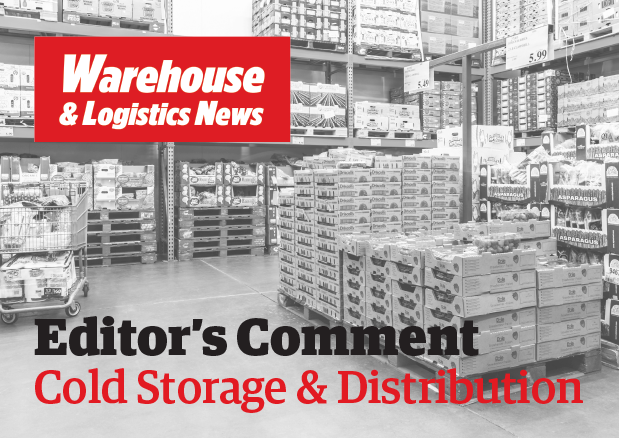Cold stores have always had their own special operating and cost concerns but now operators are faced with more concerns arising from climate change which translates as regulatory and taxation pressure if the Government is to meet its environmental targets. What this calls for is big new investments to make the food and drinks supply chains more resilient and reliable because at present much of the supply chain infrastructure is no longer fit for purpose, claims Shane Brennan, CEO of the Cold Chain Federation. The good news is that new investment is growing strongly and that climate-friendly equipment progress is encouraging and money-saving.
This article was first published in the March 1st 2020 issue of Warehouse & Logistics News, subscribe to the magazine by clicking here.
 There are basically two routes one can go down when planning a new or chilled cold store, namely in-house development or use of a 3PL highly experienced in cold store operations. The former is more likely if food and drinks production is preferred next to the cold or chilled store. In either case the overriding consideration must be energy costs, which typically account for 25% of total running costs, and given that building costs are also much higher than for ambient stores then getting the building size right is crucial. This will have implications for the types of racking and handling equipment that gives the best mix of storage density consistent with the desired handling times.
There are basically two routes one can go down when planning a new or chilled cold store, namely in-house development or use of a 3PL highly experienced in cold store operations. The former is more likely if food and drinks production is preferred next to the cold or chilled store. In either case the overriding consideration must be energy costs, which typically account for 25% of total running costs, and given that building costs are also much higher than for ambient stores then getting the building size right is crucial. This will have implications for the types of racking and handling equipment that gives the best mix of storage density consistent with the desired handling times.
A popular racking choice for cold stores is mobile racking because of its highest density achievement but this much depends on the need for handling speed. Other high-density achievers like drive-in and push-back racking also present relatively poor accessibility rates. APR can be a good compromise now that very narrow aisle articulated forklifts can work safely in aisles only 1.8 mt wide compared with the former favourite of reach trucks needing at least 2.8 mt working widths. If high handling rates are the norm then consider fitting these trucks with heated cabs because that will save the recommended 15-minute break in every hour and improve working conditions.
Refrigeration equipment can also play an important role in saving costs and meeting future environmental issues. A good example is Star Refrigeration’s installation for BrewDog in Motherwell, Europe’s first fully refrigerated beer warehouse. They chose to use natural refrigerants like CO2 which reduces the plant’s carbon footprint and avoids future regulations against harmful f-gases. Costwise, there were substantial financial savings of 30% compared with a traditional ammonia glycol system. Other energy savers to consider are effective fast-acting doors and LED lighting, but none of these will work optimally without robust regular inspection and maintenance because even minor temperature variations can cause costly product spoilage.
Such are the unique challenges of cold and cool stores that the Cold Chain Federation recently issued a new guide that helps cold store businesses with unique cold store safety challenges. Called “Keeping people safe in the cold store,” it provides a one-stop shop overview of the major risks in a typical cold storage warehouse, bringing previously disparate industry advice into one place for the first time. Shane Brennan remarks “Cold facilities are an inherently high-risk environment with unique challenges to be factored into the health and safety planning and management. It’s the first health and safety guide of its kind specifically aimed at cold stores and this resource will save businesses time and help them comply with health and safety compliance in an efficient and structured way.” The new guide can be downloaded at the Cold Chain Federations’ website: www.coldchainfederation.org.uk/advice.
Bill Redmond, Features Editor




Comments are closed.